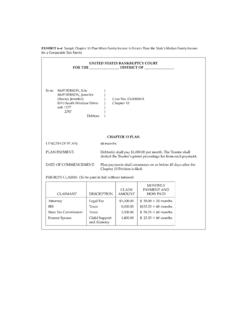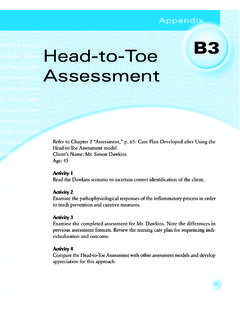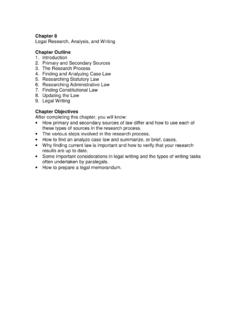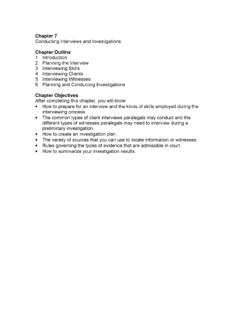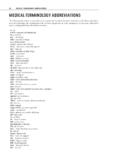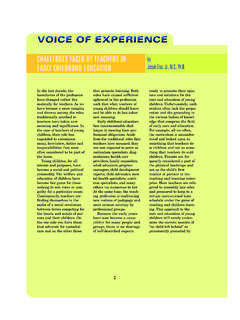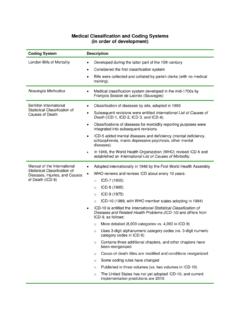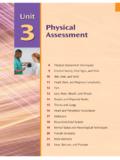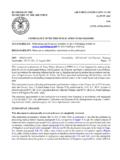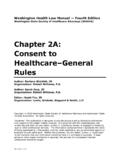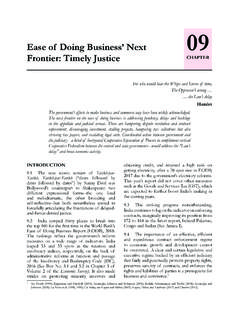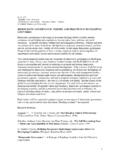Transcription of Chapter 6 The Civil Litigation Process - DelmarLearning.com
1 Chapter 6. The Civil Litigation Process Chapter Outline 1. Introduction 2. Civil Litigation An Overview 3. The Pleadings 4. Pretrial Motions 5. Discover 6. Discovery of Electronic Evidence 7. Preparing for Trial 8. The Trial 9. Posttrial Motions and Procedures Chapter Objectives After completing this Chapter , you will know: The basic steps involved in the Civil Litigation Process and the types of tasks that may be required of paralegals during each step of the pretrial phase. How a lawsuit is initiated and what documents are filed during the pleadings stage of the Civil Litigation Process . What discovery is and what kind of information attorneys and their paralegals obtain from parties to the lawsuit and from witnesses when preparing for trial.
2 How attorneys prepare for trial and how paralegals assist in this task. The various phases of a trial and the kinds of trial-related duties their paralegals often perform. The options available to the losing party after the verdict is in. Chapter 6 The Civil Litigation Process Chapter Outline I. INTRODUCTION. A. The paralegal plays an important role in helping the trial attorney prepare for and conduct a Civil trial. B. Many paralegals assist the attorney at trial, in the courtroom. II. Civil Litigation AN OVERVIEW. A. The procedural rules of the court in which the lawsuit is brought must be followed. B. All federal, Civil trials are governed by the Federal Rules of Civil Procedure (FRCP). C. Each state has its own rules of Civil procedure.
3 In many states these are similar to the FRCP. D. Additionally, many courts have their own local rules of procedures that supplement the federal or state rules. E. The Preliminaries i. The Initial Client Interview. Because the paralegal will be working with the attorney on the case, the paralegal should attend the initial client interview. Living the Litigation Litigation has a common pattern. Study that pattern; make a checklist, mental or in writing, to use in following and managing your case. Retain copies of pleadings you draft. That language may be valuable to your next case. III. THE PLEADINGS. A. Drafting the Complaint i. The complaint is a document that states the claims the plaintiff is making against the defendant. ii.
4 The complaint and the defendant's answer are pleadings. The pleadings inform each party of the claims of the other and specify the disputed issues. iii. The Complaint includes the following sections: 1. The Caption 2. Jurisdictional Allegations 3. General Allegations (the body of the complaint). 4. Prayer for Relief 5. Signature 6. Demand for a Jury Trial B. Filing the Complaint i. Traditional Method of Filing 1. Traditionally, a person filing a complaint personally delivers the complaint to the clerk of the appropriate court. ii. Electronic Filing Methods 1. The FRCP provides that federal courts may permit filing by fax or other electronic means.. 2. Today, many courts at the federal and state level are experimenting with various methods of electronic filing: faxes, e-mail transmissions, and CD-ROM.
5 C. Service of Process i. The Summons 1. The summons is a legal document that identifies the parties to the lawsuit and the court in which the case will be heard, and directs the defendant to respond to the complaint within a specified time period. ii. Serving the Complaint and Summons 1. How service occurs depends upon the rules of the court or jurisdiction in which the lawsuit is brought. 2. Many law firms contract with independent companies that provide Process service. 3. Alternative Service Methods a. Substituted service is any method of service allowed by law in place of personal service. 4. Proof of Service a. A return-of-service form is submitted to the court as evidence that service has been made. iii. Serving Corporate Defendants 1.
6 The summons and complaint are served on an officer or a registered agent (representative) of the corporation. 2. The name of the corporation's registered agent can be obtained from the secretary of state's office. iv. The Defendant Can Waive Service 1. If the defendant is aware the lawsuit is being filed, they may waive (give up) her right to be formally served with a summons. 2. Defendants who agree to waive formal service of Process receive additional time to respond to the complaint under the FRCP. D. The Defendant's Response i. If the defendant fails to respond to the complaint within the appropriate time period, a default judgment is entered by the court against the defendant. ii. The Answer 1. A defendant's answer must respond to each allegation set out in the plaintiff's complaint.
7 2. Any allegations that are not denied by the defendant are deemed to have been admitted. 3. A defendant may assert in the Answer an Affirmative Defense that attacks plaintiff's legal right to bring an answer. iii. Motion to Dismiss 1. A motion is a procedural request submitted to the court. 2. A notice of motion must also be served on the opposing party. 3. The motion to dismiss requests the court to dismiss the case for reasons provided in the motion. 4. Supporting affidavits (sworn statements) can be attached to the motion in its support. 5. A memorandum of law (sometimes called a brief) may also be submitted along with the motion to dismiss. E. The Scheduling Conference i. After the complaint and answer are filed, the court will typically schedule a conference to consult with the attorneys for both sides.
8 Ii. At this conference, the judge will enter a scheduling order that sets out time limits for the case. iii. Rule FRCP 16(b) governs the scheduling order. F. Amending the Pleadings i. Because no attorney can anticipate how a case will evolve, the complaint or answer may have to be amended. IV. PRETRIAL MOTIONS. A. Motion for Judgment on the Pleadings i. A motion for judgment on the pleadings indicates that no facts are in dispute and the only question is how the law applies to a set of undisputed facts. B. Motion for Summary Judgment i. A motion for summary judgment asks the court to grant a judgment (without a trial) on behalf of the party filing the motion. ii. The court will only grant this motion if it determines that no facts are in dispute and the only question is how the law applies to a set of facts agreed on by both parties.
9 Iii. When the court considers this motion, it can take into account evidence outside the pleadings. V. DISCOVERY. A. Discovery is the Process of obtaining information from the opposing party or from other witnesses. B. The discovery rules are designed to make sure that a witness or a party is not unduly harassed, that privileged information (communications that ordinarily may not be disclosed in court) is safeguarded, and that only relevant matters are discoverable. C. Interrogatories i. Interrogatories are written questions that must be answered in writing. ii. Interrogatories may only be served on a party to the lawsuit. iii. Drafting interrogatories 1. FRCP 33 limits the number of interrogatories in federal court cases to 25.
10 Iv. Answering interrogatories 1. The party receiving the interrogatories must answer them within a specified time period (30 days under FRCP 33), in writing and under oath. D. Depositions i. Depositions are oral questions, given under oath. ii. Depositions may be taken of witnesses as well as parties. iii. The person being deposed is the deponent. iv. The Role of the Deponent's Attorney 1. Under FRCP 30, the deponent's attorney's role is limited at the deposition. 2. In general, the attorney may instruct a deponent not to answer a question only when necessary to preserve a privilege. v. The Deposition Transcript 1. A court reporter will usually record the deposition proceedings and create an official deposition transcript. 2.
